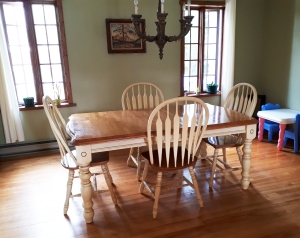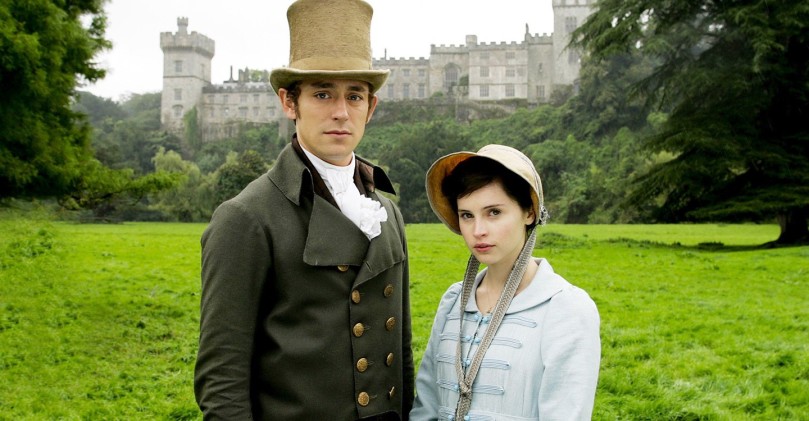It was October 28, 2018. I had slept in and had been awake in bed for a while when my stomach demanded I get breakfast. I went downstairs to find my husband entering the living room with a salad bowl in one hand and a shovel in the other.
“What are you doing with a shovel?” I asked, my mind still not fully awake.
“There’s a bat inside.”
The last remains of morning mist flew from my brain and a huge grin appeared on my face. My father had caught a bat inside when we were little, but I didn’t get to see it. My sister caught one in her house, but again… I hadn’t seen it. It was finally my turn! Our child’s wonder was nothing compared to mine.
“Where?”
“I hit it with the shovel and now it’s on your flower pot on the fireplace shelf.”
“You… what!?”
Horrified, I hurried over to the flower pot to see for myself. I grabbed the bowl from my husband’s hands saying I’d catch it myself, then moved the flower pot. To my relief, the poor thing was still alive—she climbed on the stone wall with her claws and thumbs. I was too fascinated to make any attempt at catching her so she flew off.
I’ve translated part of an encyclopedia on Canadian mammals back in 2012… I’d found the section on bats especially interesting, and from then on I’ve felt like my totem animal was a bat. Anyway, that one was especially large, it seemed, so I decided it was a big brown bat, perfectly healthy… aside from the headache I imagined her to have. No white nose. See, in North America millions of bats have died in the past years due to an epidemic of white-nose syndrome.
I marvelled as she flew in circles in our living room, her dark wings so thin that light shone through. Then my husband tried hitting it with the shovel again; I blocked his arms with mine.
“Stop it! Put that back in the garage!”
“No.”
“You’re gonna hit the ceiling!”
We’d just repainted it; I thought it might strike a cord.
“I won’t.”
Our 5-year-old daughter approached him, taking my side.
“You’re gonna hit the kid!”
“Sweetie, don’t come near daddy.”
The ridicule of the situation struck me and I started laughing uncontrollably, all the while sabotaging his attempts at batricide. People find women climbing on chairs because of.
“Come on, it’s just a bat, it’s not a pest!”
“It’s got nothing to do inside.”
“Of course not, but it’s no reason to hit it with a freakin shovel! Look, can you chill out a bit? Continue playing your game,” I said, having noticed he’d been playing Assassin’s Creed. “I’ll eat breakfast and then I’ll take care of her.”
One thing about me is that I need to eat first thing in the morning or my totem animal transforms into Dracula… and my spouse’s stubbornness was already starting to get on my nerves.
“Heck no, it has to go now!” he replied.
The bat was still flying in circles, intermittently trying to hang on the curtain rod, which was too big and slippery for her small feet.
The argument continued way too long. When I started fantasizing about hitting him with the darn shovel, I figured I had to use psychology to get my point across before I lost it…
“You scared or what?”
“I’m not scared, it’s just got nothing to do inside.”
I was really, really tired of his pig head. I knew he wasn’t scared of the bat, but what he didn’t know was that he ought to start being scared of Dracula.
“It’s not like she wants to be inside. Look at her, she’s panicked! Chill out, let it land, I’ll catch it when it lands. Go get Leslie’s net to catch insects.”
At last, I got him to get out of the house with the darn shovel. Meanwhile, the bat landed near the TV console, and ended up taking refuge under it. I hoped it’d stay there long enough for me to eat breakfast, but unfortunately, it came back out by the time my husband came back with the net.
I put on a leather glove, because as much as I like bats, it’s never a good idea to get bitten by a wild animal, and about 5 seconds later, the bat landed on the ground. I moved over and slowly put the net over her; she didn’t even realize she was trapped before I seized her gently with my gloved hand. My heart ached as I felt her struggle in my hand—her body was about as tall as the width of my hand…
I took her outside and watched as she spread her beautiful wings and left the house-of-horrors for good. I only regretted that I didn’t have a birdcage at home in which I could have put her to observe her for a few minutes before I let her go forever…
And then I ate breakfast and Dracula turned back into a bat.
![]()
Happy Halloween!
Happy Samhain!
And a very happy NaNoWriMo’s Eve!


 People’s generosity. My mother gave me over 30 varieties of plants from her garden just this year. My father built a rustic handrail from scratch for our basement staircase. My husband’s company refurnished their offices and gave away old desks, file cabinets, bookcases, chairs, monitor stands… I’ve fully furnished my home office with those. As a bonus, my new desk is adjustable in height and my new chair has adequate lumbar support, so I hope it’ll mean my back problems are in the past! My aunt offered us her old dining room set, which she’d used only a few years before she declared it too big for her kitchen… I jumped on the occasion, because our own was starting to fall apart, but also because it’s precisely the style I was looking for. It looks splendid in our dining room! From our neighbours, we got an entry hall bench and chest of drawers that we upcycled into a TV console (the TV used to be on a table the size of a nightstand). We were given most of the pieces of furniture in our house, so at present, it looks more like Molly Weasley’s house than Martha Stuart’s… but at least now the house is almost fully furnished, if not stylish.
People’s generosity. My mother gave me over 30 varieties of plants from her garden just this year. My father built a rustic handrail from scratch for our basement staircase. My husband’s company refurnished their offices and gave away old desks, file cabinets, bookcases, chairs, monitor stands… I’ve fully furnished my home office with those. As a bonus, my new desk is adjustable in height and my new chair has adequate lumbar support, so I hope it’ll mean my back problems are in the past! My aunt offered us her old dining room set, which she’d used only a few years before she declared it too big for her kitchen… I jumped on the occasion, because our own was starting to fall apart, but also because it’s precisely the style I was looking for. It looks splendid in our dining room! From our neighbours, we got an entry hall bench and chest of drawers that we upcycled into a TV console (the TV used to be on a table the size of a nightstand). We were given most of the pieces of furniture in our house, so at present, it looks more like Molly Weasley’s house than Martha Stuart’s… but at least now the house is almost fully furnished, if not stylish.






 Context
Context




